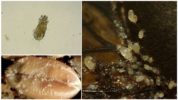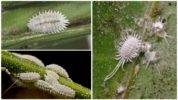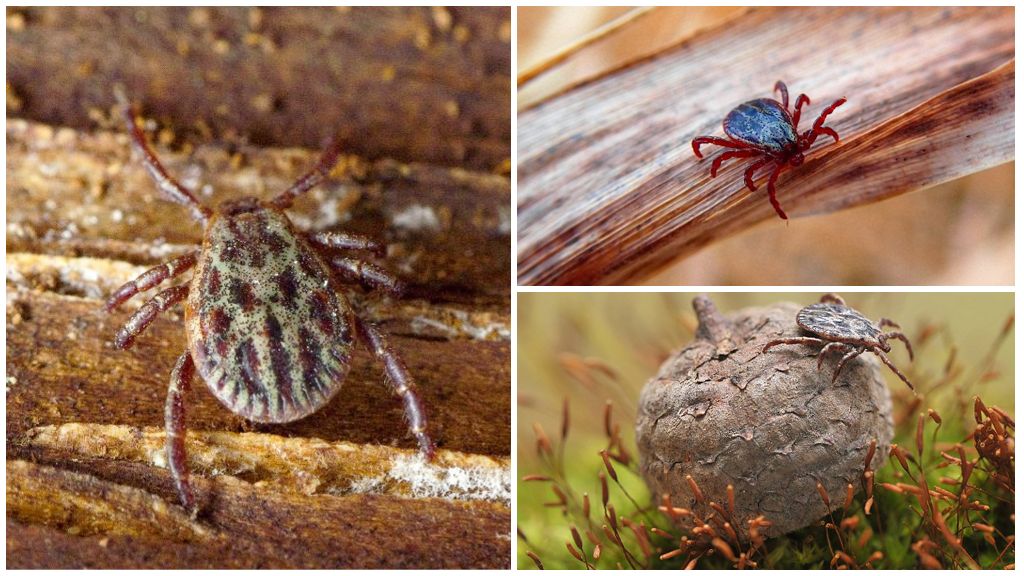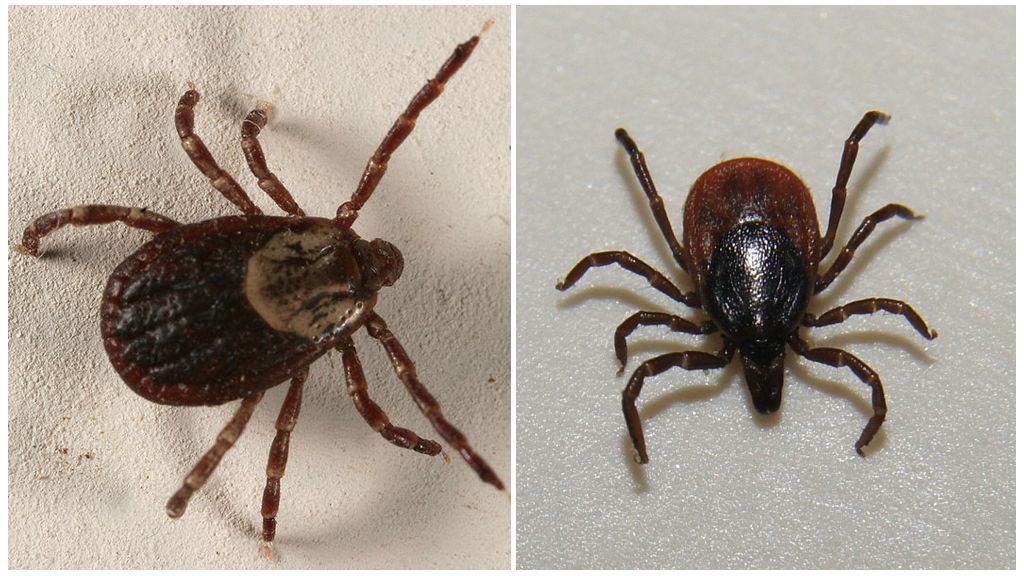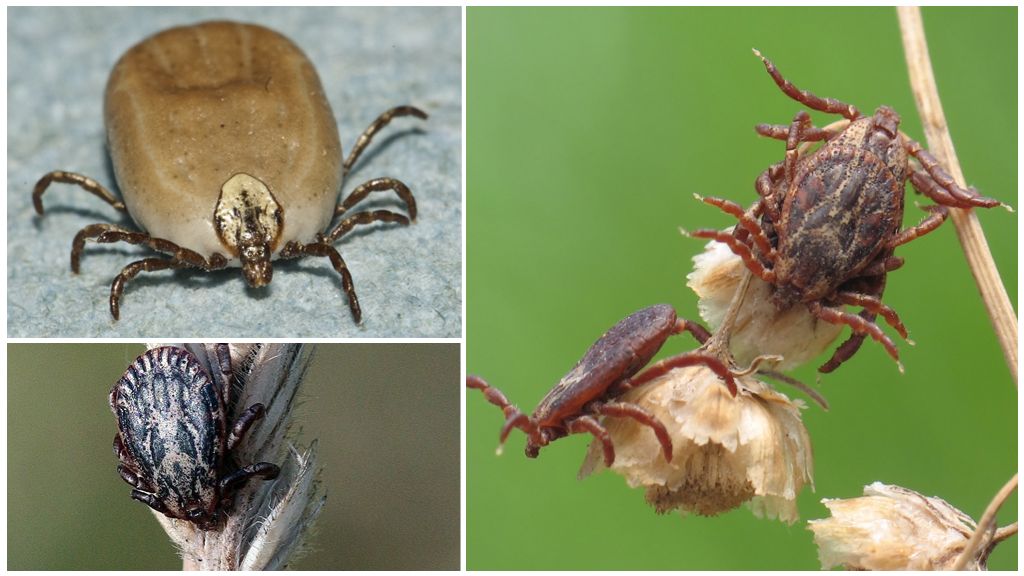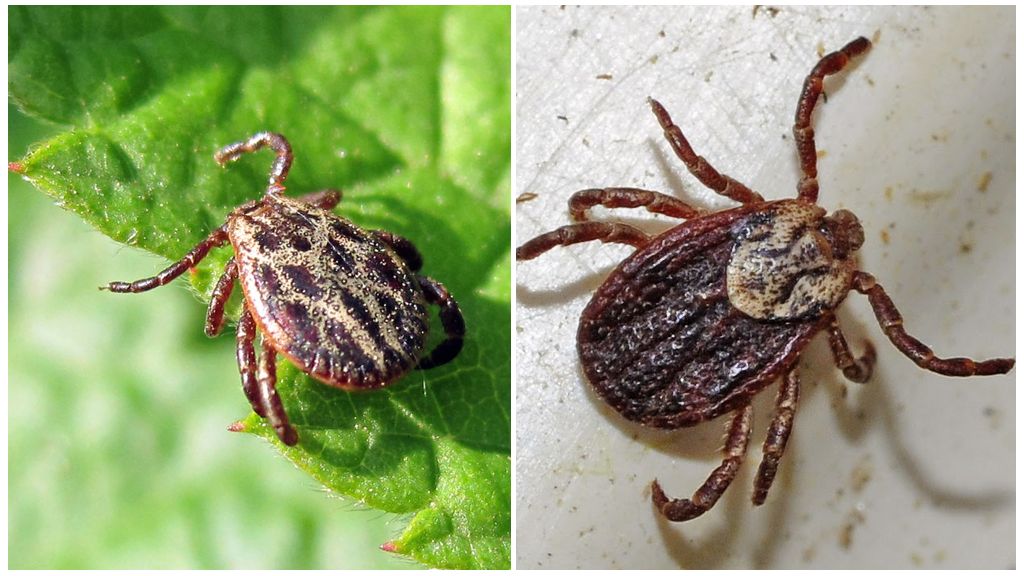- Flour mite
- Food of a flour tick
- Mealybug
One of the barn pests is the flour mite. The parasite settles in large granaries and in small jars of grain products in the apartment. He feels free in dried fruits, nuts, flour, grain, sausages and cheeses. Despite its tiny size, it can cause significant damage to stocks.
What does a pest look like?
The Latin name for the flour mite is Acarus siro. The tiny arthropod does not belong to insects, but belongs to the class of arachnids. The length of the oval body of the female is 0.67 mm; the males are even shorter - barely reach 0.3 mm. You can examine the pest in detail with a multiple increase or in the photo of the flour mite. The color of the female is white or yellowish, males are smoky.
As expected ticks, adults have 4 pairs of limbs of approximately the same length of a brownish tint. In males, the front pair has a noticeable thickening.
On a note!
Sexual dimorphism is manifested not only in the size and shape of the legs. Unlike females, in males the second segment is equipped with a tooth-shaped process, and the end of the body is crowned with 2 suckers.
Eggs are oval, white no more than 0.11 mm in length. Larvae differ from adults in a round body and have only 3 pairs of limbs. Nymphs are octopus.
Development features
Flour mite is spread all over the world. In the natural environment it lives in plant litter, haystacks. With pleasure it settles in livestock buildings, in fields with legumes, corn, cereals. It enters the granary with the harvested crop, in the inventory, equipment, containers. The speed of movement of the flour mite is 12 cm per hour, so he is not able to overcome kilometer distances.
The survival rate of arachnids is quite high. At minus temperatures up to 5 ° C, larval forms, nymphs, adults can live for 2 weeks, and the eggs remain viable for up to six months. At a temperature of + 60 ° C they die within 5 minutes. Optimum temperature indicators for development are in the range + 20-27 ° С.
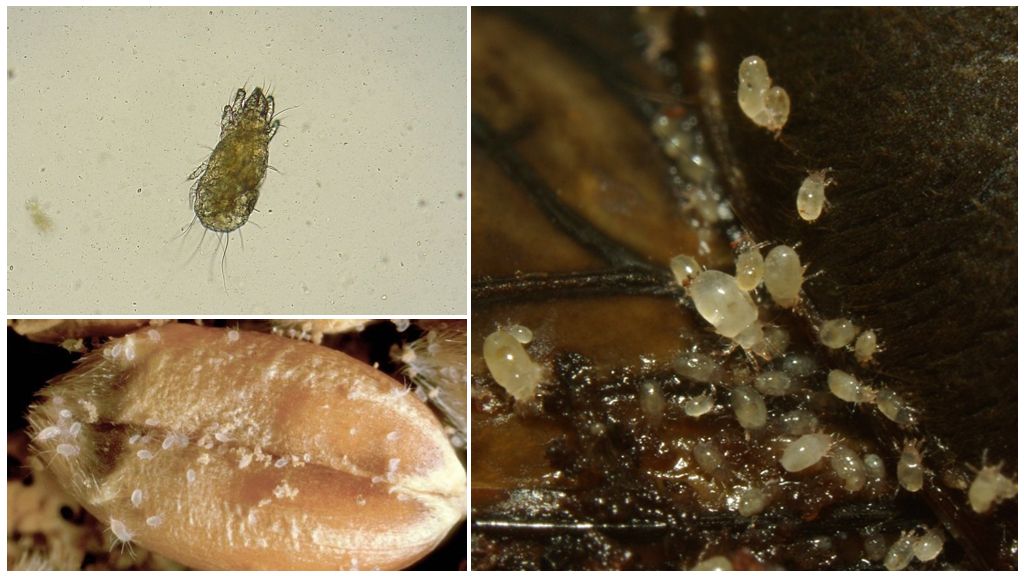
On a note!
A more important factor for the life of flour mites is moisture. Comfortable humidity 80%, minimum threshold 60-65%.
Breeding
A day after the transformation from a nymph into an adult, ticks begin to mate. They approach the process with all responsibility. The female, which is superior in size to the male, drags a boy backing backward. The wedding promenade lasts several hours. Fertilized female individual after 3 days dosed, 3-4 pcs. per day, scatters eggs directly at the feed base.
On a note!
The total fertility of the female reaches 150 eggs, under adverse conditions it is reduced to 20.
Embryonic development lasts 4 days. The hatched larva differs from the imago in the number of legs. The younger generation needs abundant nutrition, so the larvae eagerly begin to absorb food, which ensures their rapid growth. Having accumulated a sufficient amount of nutrients, they fall into a stationary state for 2 days. Then they molt and transform into a nymph. This stage lasts about a week, the remainder of which individuals also conducting in a stationary state. Then the skin bursts along the back and a nymph of the second age appears.
What does the flour mite eat and what harm does
The diet includes a wide variety of foods. The tick does not belong to vegans and, in addition to plant foods, can eat animal products. The menu includes:
- grains of oilseeds, cereals, legumes;
- cereals, flour, compound feed;
- dried fruits, tobacco, medicinal herbs;
- spices, egg powder;
- fish flour;
- cheeses and sausages.

In seeds, pests begin to eat up the embryo. Such seeds do not germinate and pose a threat of infection to neighboring ones. In storages, the loss of forage can be 50%.
Important!
Products infected with flour mites are categorically contraindicated not only for humans, but also for animals. The life process of pests is accompanied by the development of bacteria of the intestinal group, the release of toxic substances, excrement, which can provoke kidney disease, gastrointestinal tract, flour scabies, allergic manifestations.
How to fight
To determine at home that the flour is infected with a tick is quite simple. With a strong congestion, it appears that it is moving. If you pour flour in a small layer, level it and look at it after 20 minutes, bulging mounds will be noticeable. The pest can be suspected by the characteristic mint smell and the appearance of a brown crust.
Measures to combat the flour mite at home come down to the disposal of spoiled product, disinfection of all containers, kitchenware, furniture. The food, about which doubts arise, is subjected to weekly freezing or frying in the oven at a temperature not lower than + 60 ° C.
On an industrial scale, cooling or heating of the grain is carried out to destroy the tick. As a preventive measure, storages are disinfected, disinsection, fumigation, and infection control are carried out on an ongoing basis.
Mealybug
This herbivorous parasite is often called a mealy mite. However, this is wrong. Only a similar adjective connects them. Mealybug - not even a tick, but an insect. About 220 species live in the European expanses, among which are lovers of decorative, greenhouse, industrial crops.

The size of the parasite varies from 0.5 to 10 mm. A characteristic feature is a waxy whitish coating of coatings, similar to a scattering of flour, for which the pest got its name. On the edges or throughout the body are peculiar outgrowths.
Sexual dimorphism is pronounced. Males are smaller, but they have a pair of wings. The male apparatus is absent, therefore, they do not feed on anything. Most often, the mating field they die. However, the reproduction of mealybugs is possible without the participation of males. Feet can be reduced depending on the type. Only strollers are mobile - larvae of the first age. Imago lead a motionless lifestyle.
On a note!
Mealybugs are frequent guests on indoor plants. Their calling card is the appearance of cotton deposits, provoking further infection with soot fungus.
If the pests have not yet had time to firmly establish themselves, the leaves are thoroughly washed with a soap solution, treated with infusion of cyclamen, calendula. In case of severe infection, to to get rid of mealybug on indoor plants, resort to the use of drugs: Fitoverm, Aktara, Calypso, Confidor.
Prevention comes down to inspecting plants, conducting water procedures, since the mealybug is not a fan of moisture.
